When in Luxor in 2001 I stayed in the Mercure Coralia. Danny and Katy stay here in chapter 7 and 8 then move to the Winter Palace for one night in chapter 23. The Winter Palace is a famous old hotel which used to be a palace for Egypt's last monarch, King Farouk, who ruled from 1936-1952. It was built in 1886 during the English and French occupation of the area.
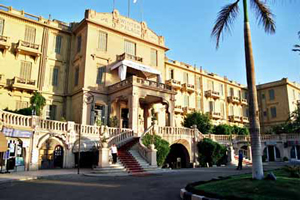
Winter Palace
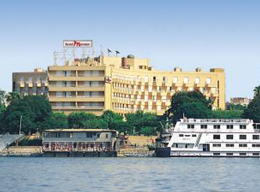
Mercure Coralia
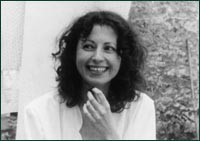 The
Archaeologists
The
ArchaeologistsThe name of the leader of the French expedition, Marie Riviere, I borrowed from a French film star whom I admire. She has appeared in several films by Eric Rohmer including The Green Ray.
The Indian archaeologist, Manish, is based on a real person. Manish was a friend I had when I lived in the US - not an archaeology grad student but a civil engineering grad student. When I told him I was writing this book he requested that he be put in it as a character. Request granted!
The team is excavating a tomb on the slopes near Hatshepsut's temple. As you can see from this map, there are loads of ancient tombs in the area. The ones in blue are from the 19th dynasty. I imagine Ahmose's tomb to be somewhere to the right of 316. There aren't any other 18th dynasty tombs in this area, but I imagine Hatshepsut allowed Ahmose to be buried near her temple as a favour, for saving her life.
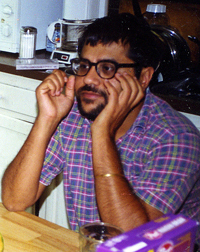
Manish at home, and below with me, somewhere in Colorado
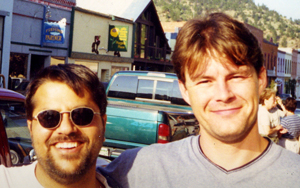
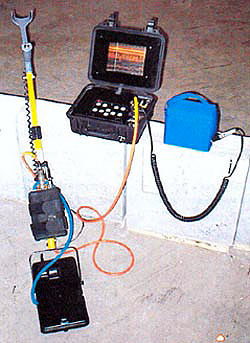
Ground penetrating radar equipment
Geophysics
Geophysics means examining the earth using special machines - for example seismometers which look for earthquakes. In archaeology geophysics is extremely useful for looking beneath the ground to see if there are any remains of objects or buildings. If you've ever watched Time Team you'll know that they're always using devices to measure electrical resistance or magnetic fields. These devices are useful because the archaeologist does not have to go digging to see what's there, possibly damaging remains that they can't see.
A popular method for archaeologists is called ground penetrating radar. This is probably what the French team would have used to look for Hatshepsut's tomb today. It is a device which sends radar beams into the ground - these are reflected by surfaces below back into a sensing device. A great deal of computer processing of the data is needed before an image showing what's underground is revealed.
My story is set slightly in the future with more powerful computers to process the data more quickly. I also have my archaeologists using ultrasound. This is a less common method which might be used with rock in the future. Nowadays it used in various ways, for example to look inside a mummy's tummy to see how a baby is developing.
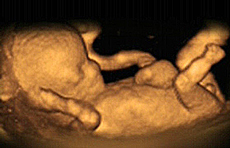
Ultrasound scan of a foetus